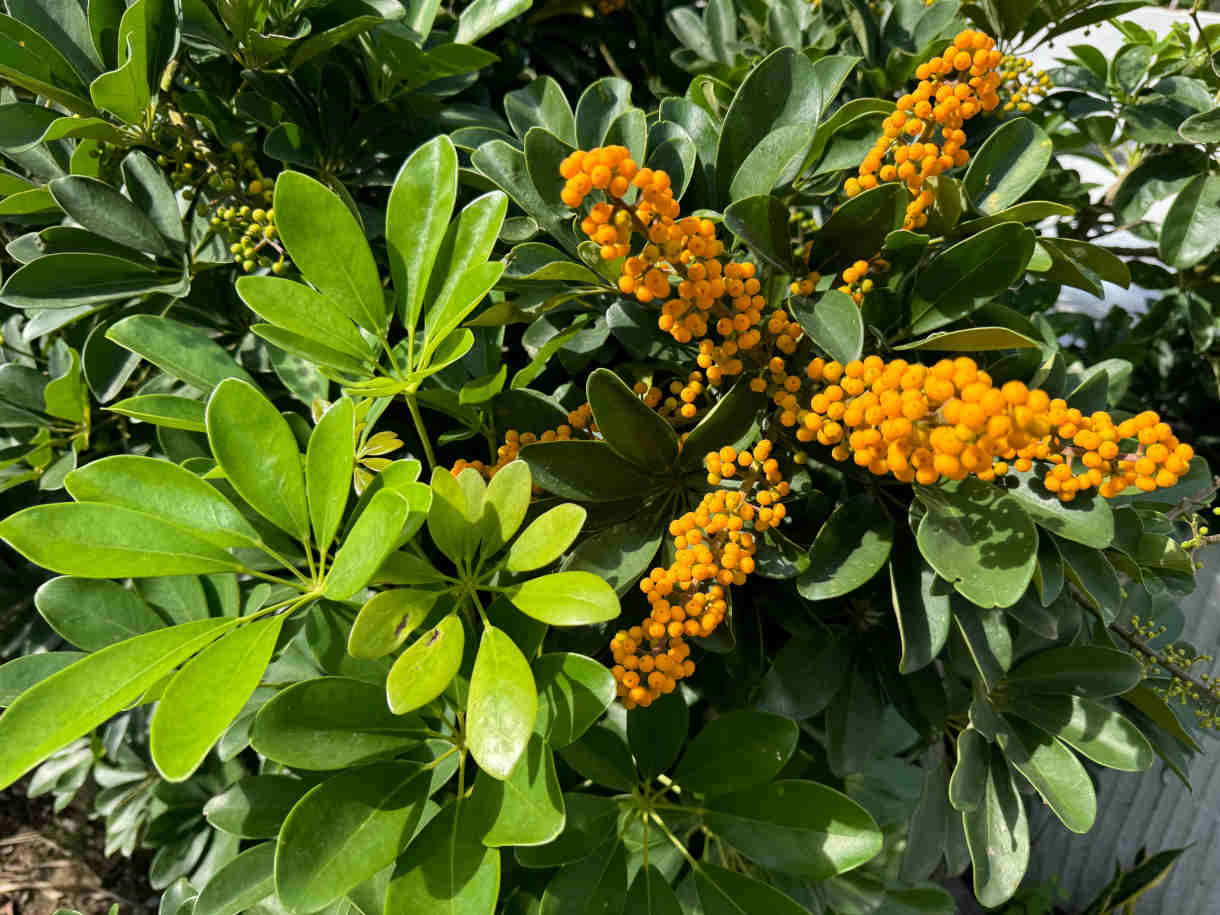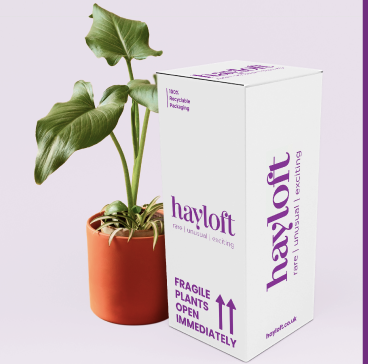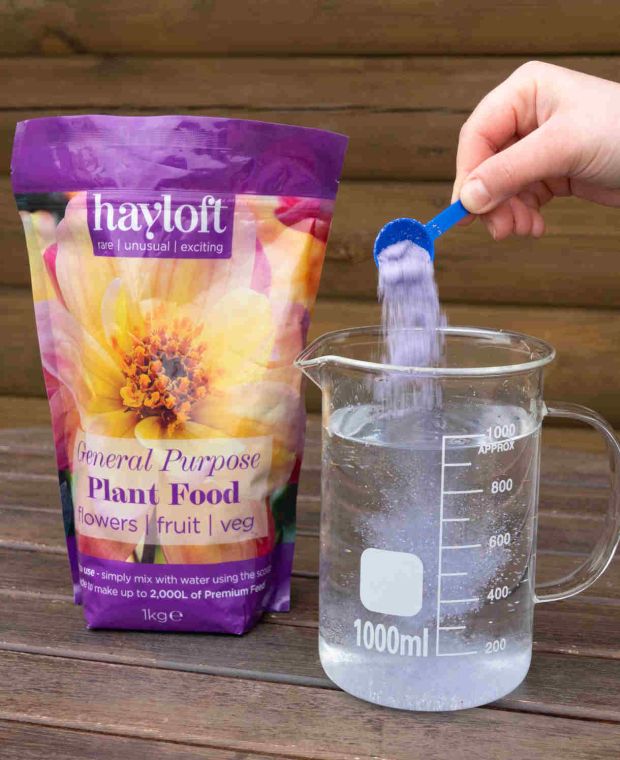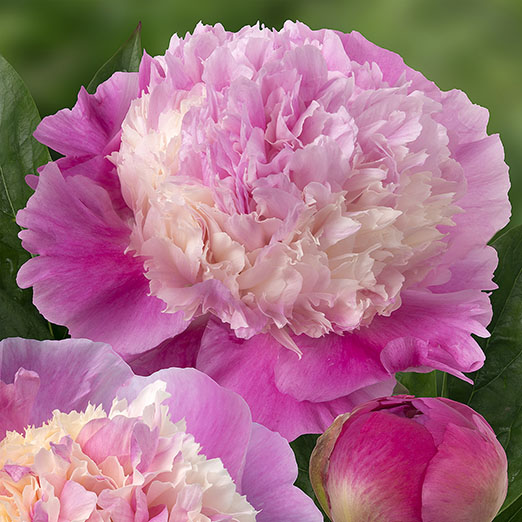How to grow Schefflera
Also known as Heptapleurum, Schefflera is an award-winning, single-stemmed tree or multi-stemmed shrub (dependent on how pruned/trained) which has glossy, dark, foliage which is covered in silvery hairs when young. Closely related to both Tetrapanax and Fatsia, leaves have up to eleven slender, pointed leaflets arranged on dark red stalks which look like wheel spokes. A fantastically bold and architectural plant which makes a dramatic statement wherever you choose to plant it.
A member of the Araliaceae family which contains over 300 different species of evergreen, tropical and subtropical plants which originate from Asia. Not all are hardy enough to grow outside in the UK, with many known better as houseplants. Schefflera, originates from Taiwan and is able to withstand temperatures down to -5 to -10°C (H4) so will grow outdoors, in the ground or a container, throughout large areas of the UK once it achieves a more mature height of around 1m or more. From July to October greenish brown flowers are borne on mature specimens. Although these are not particularly showy, they bring an intriguing additional texture as they open as branched sprays or racemes and provide a source of nectar for bees and other pollinators. Flowers are followed by ornamental, purple-black berries in winter.
A handy tip is to plant younger Schefflera in a container which can easily be moved into a greenhouse or conservatory over winter for protection if needed. Once these are established it is feasible to leave them outdoors and wrap in fleece for protection.
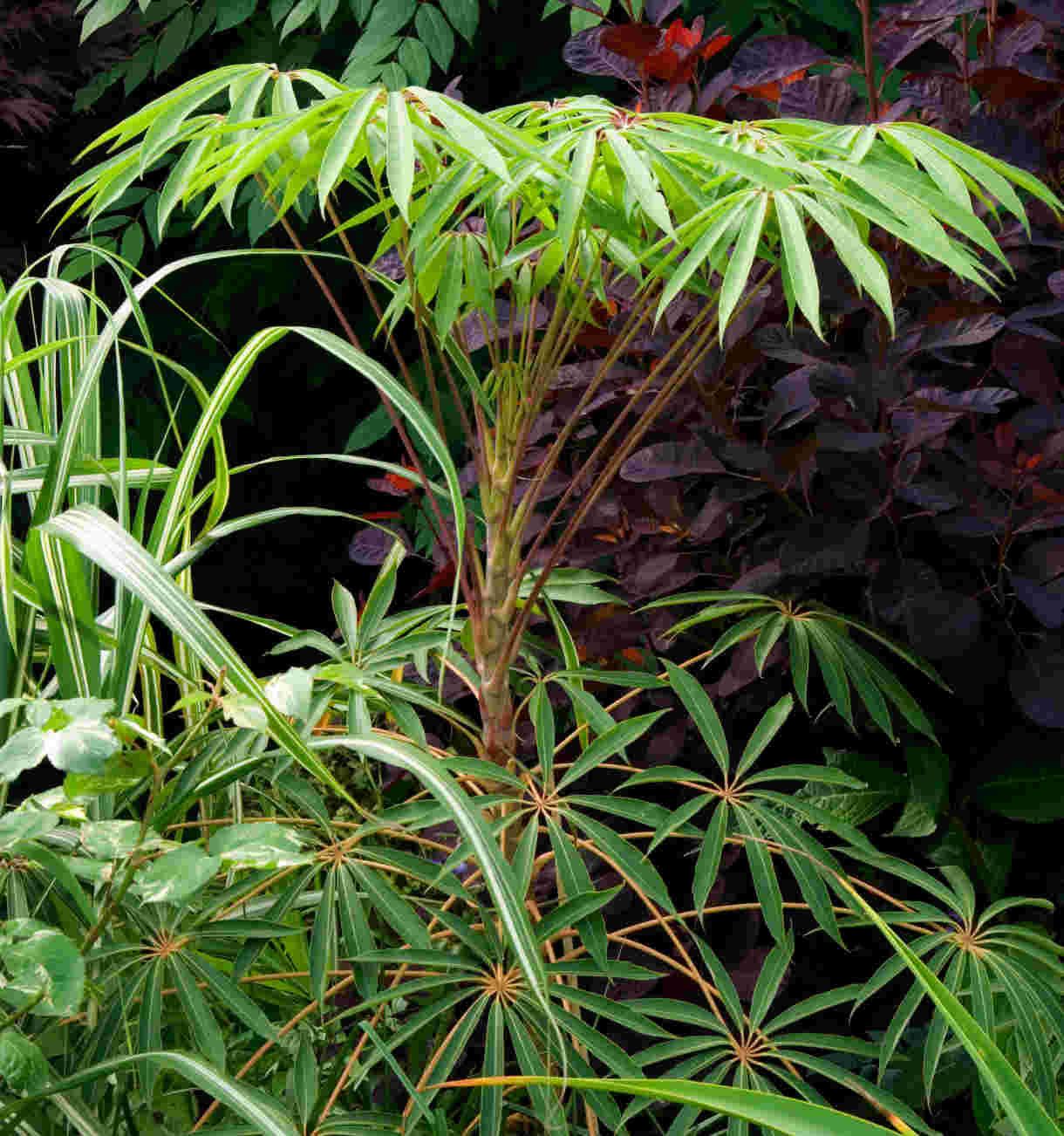
Zantedeschia is a genus of flowering plants from the family Araceae and is native to southern Africa. With a rich history dating back to the Ancient Romans, these deciduous or semi-evergreen perennials have been used as a symbol of celebration. Zantedeschia was Named after Professor Giovanni Zantedeschia, an Italian botanist.
There are two main forms of Zantedeschia: hardy and tender. Hardy forms of the plant can be grown outdoors, enjoy moist soil and full sun or partially shaded conditions - these are known as Arum lilies. Tender forms of Zantedeschia prefer being grown in containers or pots and should be brought inside over the winter - these are known as Calla lilies.
With tuberous flora in all colours from whites, yellows and oranges to deep reds and purples, Zantedeschias are not to be overlooked in any garden, as long as they have sufficient sunlight to grow in.
Ready to learn more about growing Zantedeschia? Read on for all there is to know...
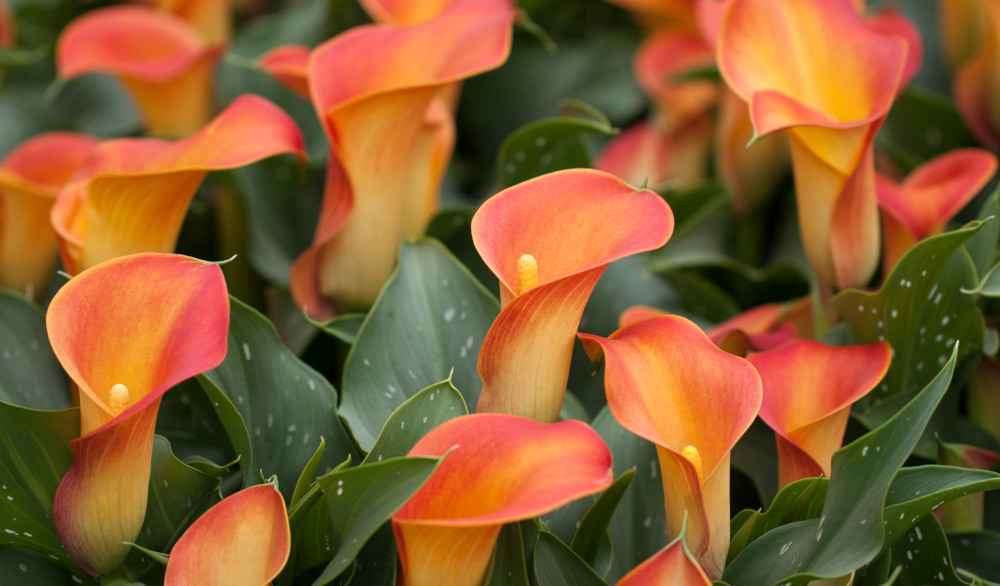
Key Information
Soil pH
Position
Hardiness

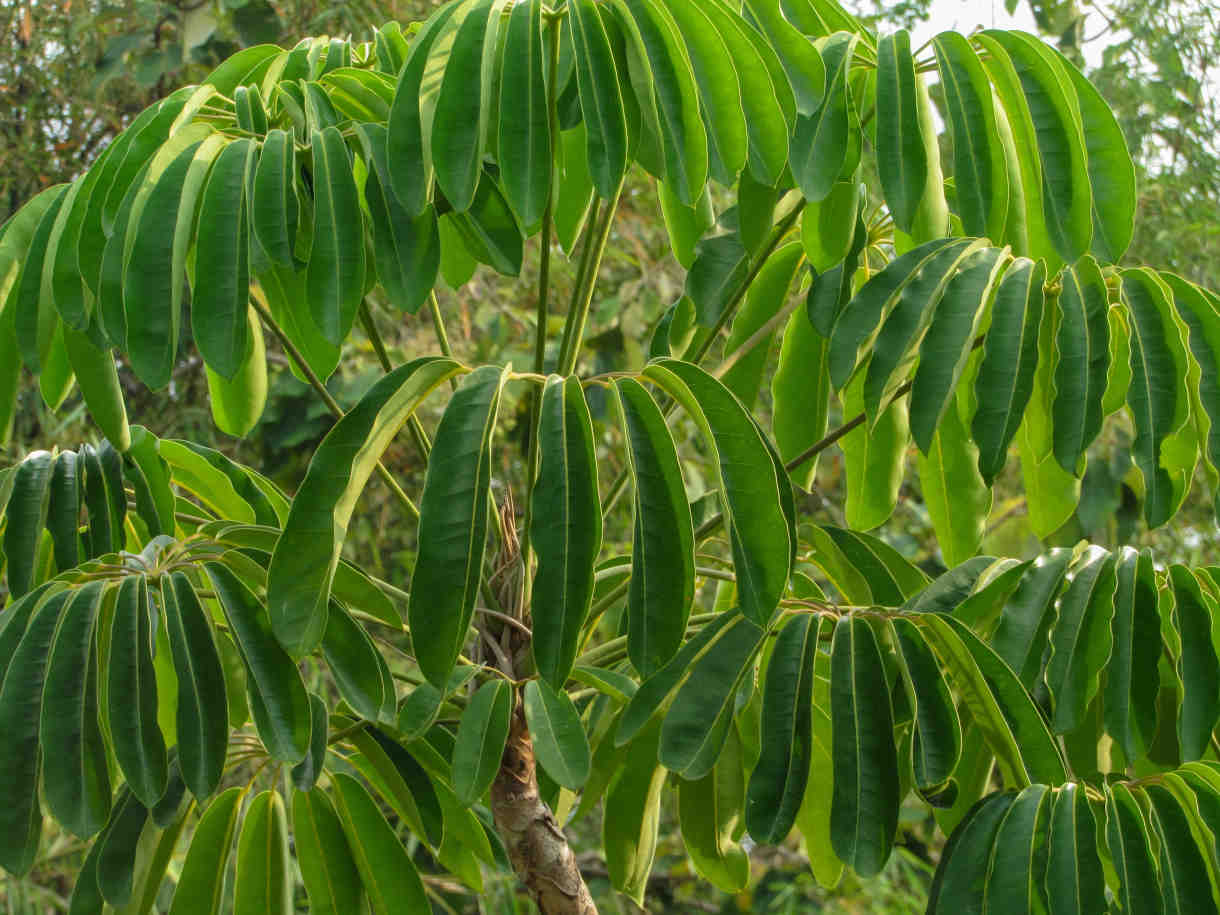
Where & when to plant Schefflera
Position - Full sun or partial shade with any aspect other than north facing
Soil - Happy in well-drained soil with some shelter from strong, cold winds
Flowering Period - July to October
Hardiness - A hardy (H4) evergreen shrub or tree once established
Ideal for gardens which are not prone to very heavy frosts and offer a degree of shelter from cold, drying winds. Young plants will need monitoring and, perhaps, moving indoors until the reach around 1m+ tall. After this, dependent upon where you are in the UK, plants can tolerate temperatures down to between -5 and -10°C as long as they do not sit in wet soil over winter. With this in mind, you should hold back on planting your Schefflera in the ground until it is mature enough and then only do so in spring when the risk of frost has passed. This will allow your Schefflera to ‘bed in’ over the summer and autumn before the colder temperatures arrive.
Schefflera likes any aspect other than north facing and will grow happily in any soils except heavy clay. A shade tolerant tree or shrub which reaches a height of around 4m with a spread of 2.5m in maturity. This variety holds the RHS Award of Garden Merit for its outstanding performance in the garden.
How to plant Schefflera
Your Schefflera can either be planted in open ground or in a suitably sized pot. Ideally, if your plant is relatively young and smaller on arrival, it is best nurtured in a pot whilst it establishes a good root structure ready for planting out in the border or gravel garden once it is over 1m tall.
For planting in containers, first choose an appropriately sized pot and ensure that you do not swamp your plant by choosing too large a container.
· If you are using a large or heavy pot, it can be a good idea to fill and plant it in situ to save yourself the trouble of moving once full.
· Use a good quality growing medium, and, if not already present in the compost (check the description on the bag) some suitable slow-release fertiliser granules. Some additional drainage such as perlite or horticultural grit will be useful too.
· Start by partially filling the pot with the compost mix; enough so that when placed on it the upper surface of the root ball is about 3cm lower than the top of the pot.
· Infill all the space surrounding the root ball with compost, firming down with your fingers then adding a little more so the plant is held tight.
· Pick up the container (if able) and lightly tap on the potting bench or ground a few times to help further settle the compost around the plant.
· Water well, preferably with rainwater, to both settle the soil and give the plant a good drink.
· A mulch with horticultural grit will look attractive and help to prevent a ‘cap’ or crust forming on the top of the compost (something container plants can suffer due to the artificial nature of their watering).
For planting in the garden, ensure you choose a spot with appropriate levels of sun and shade so as not to scorch your plant or deprive it of light
· dig the soil area removing any large stones and weeds and breaking up any lumps. Mix in some organic matter and/or compost into the soil. If your soil is heavy clay, now is also the time to add a generous helping of horticultural grit or perlite.
· Rake level and firm with your heels. Rake level again.
· Water plants well and allow to drain before planting. A good tip is to dig a hole twice the size of the root-ball.
· Place the plant in the hole, ensuring the top of the root ball sits level with the surface of the soil. Too low and the plant may rot, too high and the roots can dry out.
· Backfill with soil and firm in gently with your foot.
· Soak well with water to settle the surrounding ground. Water as needed for the first few weeks as your plant establishes and do not allow your plant to sit in wet soil.
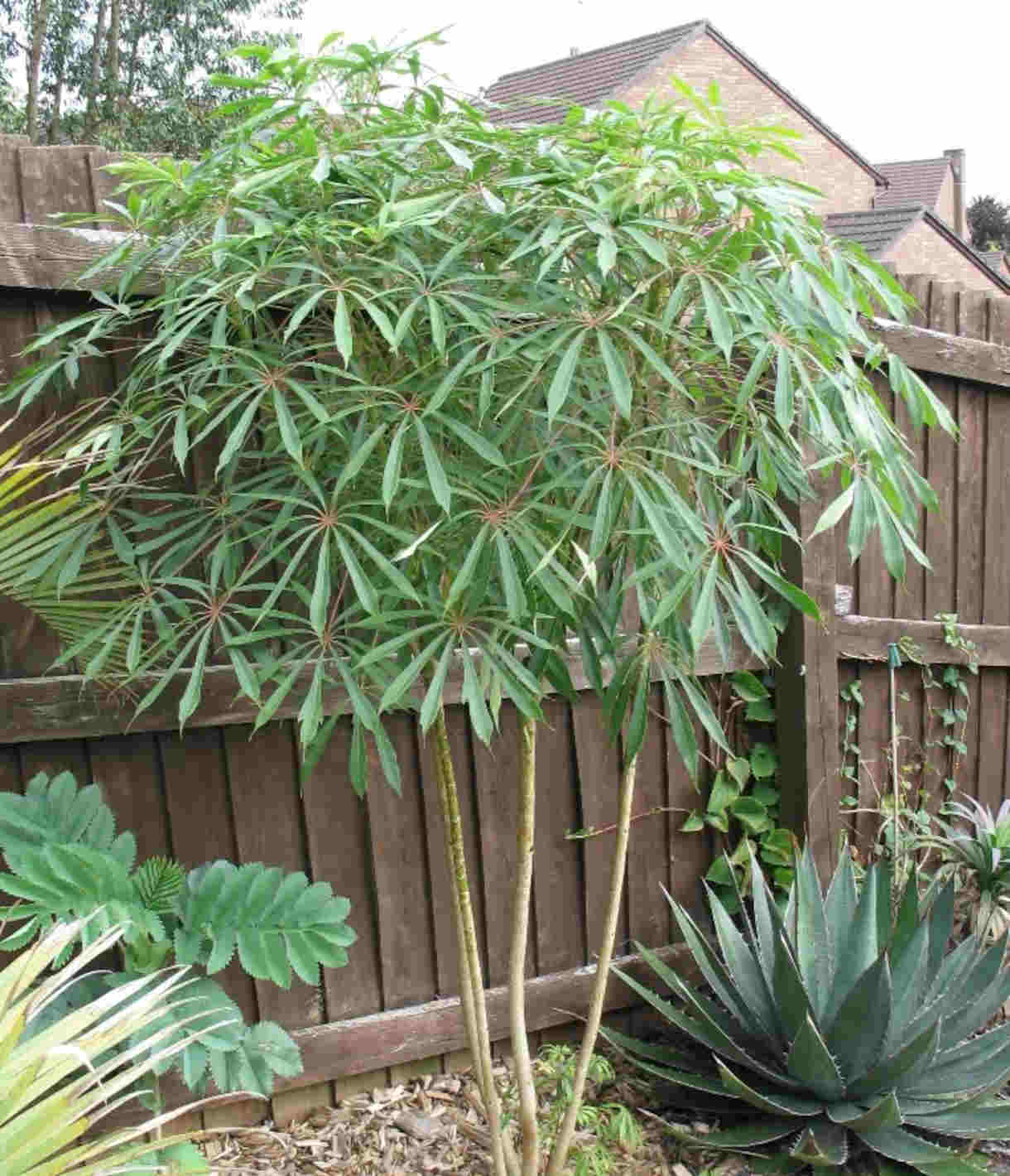
What to plant with Schefflera
These shrubs are beautiful in their own right and ideal for locating anywhere in the garden which offers the necessary protection and allows you to make the most of the beautiful foliage. They combine well with other jungle plants or leafy shade lovers - tetrapanax, fatsia, hosta and ferns.
If you would like any further planting ideas or growing advice for your Schefflera taiwaniana, please contact our friendly and knowledgeable Customer Care Team - we will be more than happy to help you.
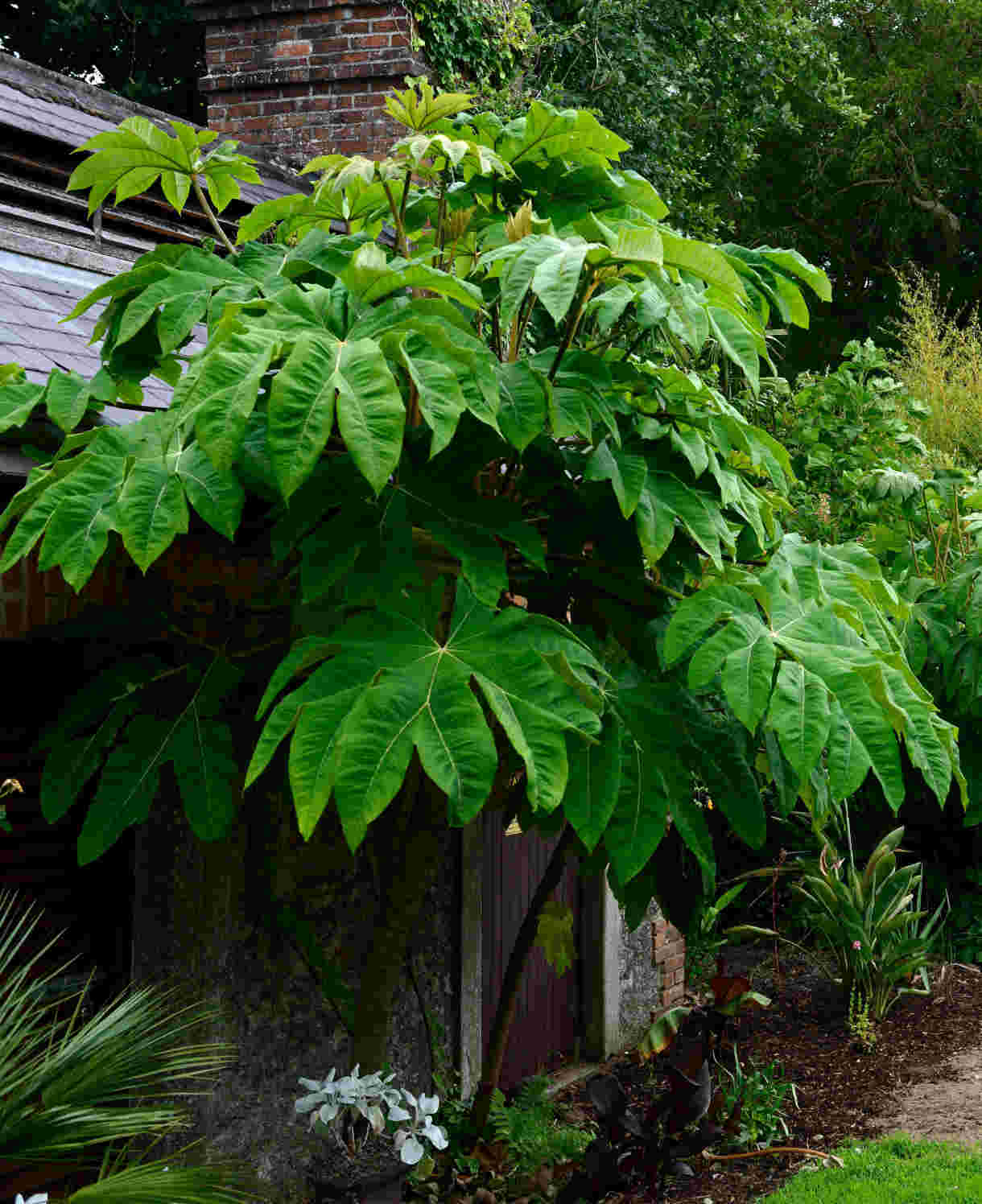
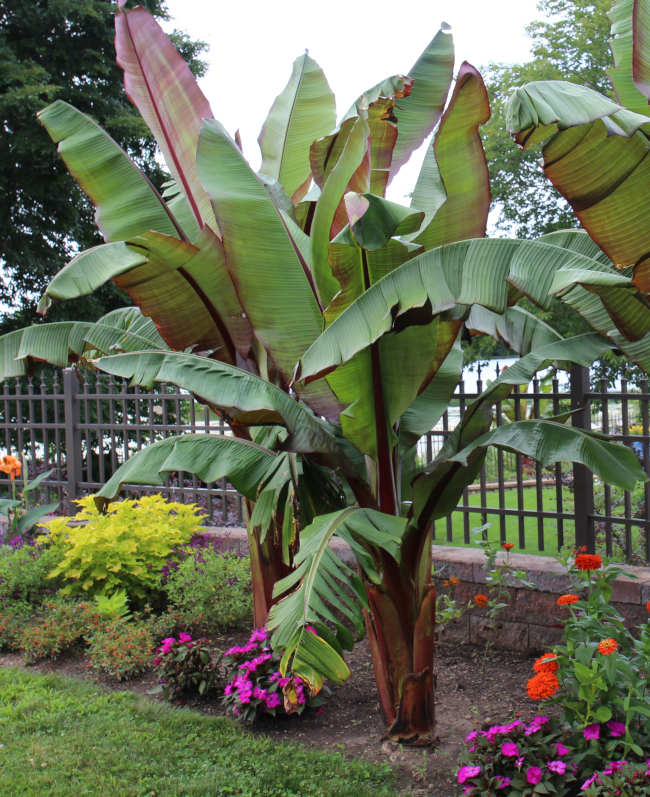
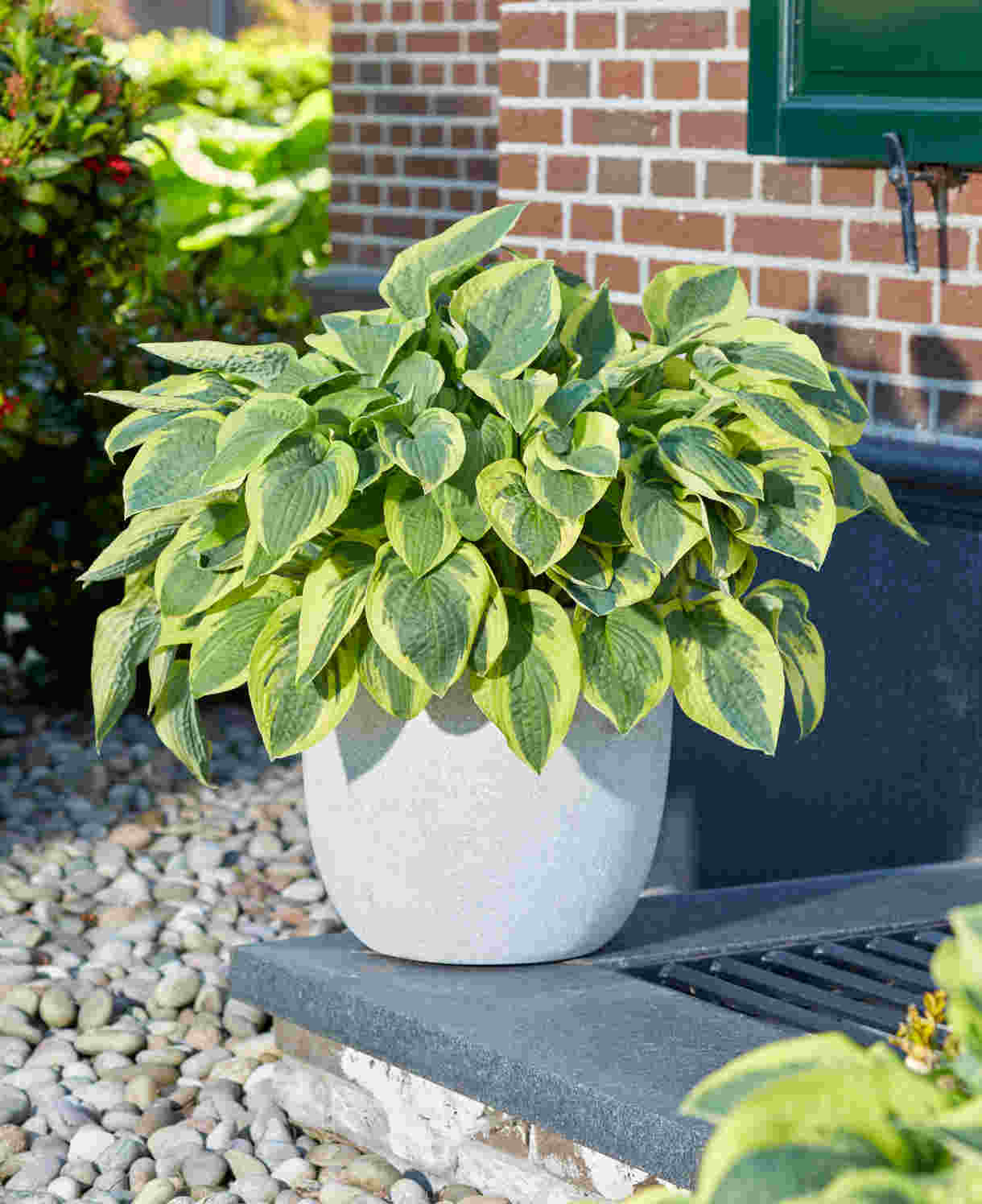
How to care for Schefflera
Pruning
No pruning is needed. Pinching out new shoots will, however, create a more bushy effect.
Watering
Water your new plant regularly for at least the first two years but do not let it sit in water – little and often may be the key. Once established, it should cope well without extra watering, except in particularly hot, dry spells.
Feeding
Your Schefflera taiwaniana will benefit from a balanced liquid fertiliser during the growing season, particularly if it is grown in a container. Alternatively, a slow-release fertiliser added to the growing medium will also help. Remember to repot as and when required, replenishing the compost each time.
Pests and Diseases
Relatively pest and disease resistant though can fall victim to spider mites, aphids and mealybugs. Watch for signs such as webbing, stippled leaves or sticky residue and treat with insecticidal soap or neem oil.
How to propagate Schefflera
This can be done by semi-ripe (or semi-hardwood) cuttings in summer. Semi-ripe cuttings are straightforward way to propagate a wide range of shrubs and trees – especially evergreens – without the need of special equipment or skills.
1. Select the cuttings from this season’s growth and remove them using sharp secateurs.
2. Place the cuttings in a plastic bag straight away. Keep the bag in the shade and aim to pot the cuttings within 12 hours.
3. Prepare the cuttings by trimming them to 10-15cm long, cutting just below a leaf node. Next, remove the lowest leaves and the soft tips. There will be about four leaves remaining. If leaves are large, cut them on half to reduce transpiration.
4. Dip the bottom of the cutting in fresh hormone rooting powder, ensuring that the cut is well covered. Tap to remove any excess.
5. Insert the cuttings around the edge of a suitably sized containers allowing some space between each and use filled with cuttings use 50 per cent free-draining potting compost mixed with 50 per cent sharp sand or perlite. Water well and allow to drain.
6. Place the container of cuttings in a greenhouse. Alternatively, cover pots with a plastic bag and put in a warm, light position, out of direct sunlight.
7. Remember to remove any excess moisture to prevent rot but keep the compost damp. Cuttings taken in summer seldom need bottom heat but by autumn cuttings will root more quickly in a heated propagator.
8. Transfer to separate pots once a good root structure has been achieved for each cutting and grow on as for young plants.
* Please be aware that many plants carry Plant Breeders Rights and cannot be propagated for commercial purposes.
Common Schefflera Questions
· How much sun does a Schefflera plant need?
Schefflera prefers indirect, bright light to full on sunshine. A warmth loving tree/shrub which should get an average of at least 4 hours sunshine per day.
· How do you encourage growth of Schefflera?
Pinching out the tips of your shrub/tree will encourage more branching and so a bushier plant.
